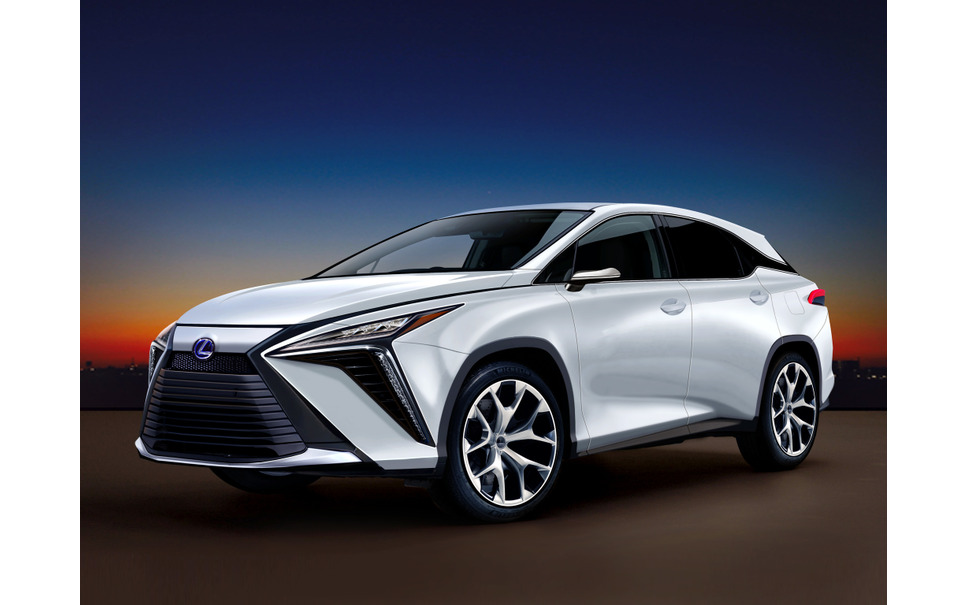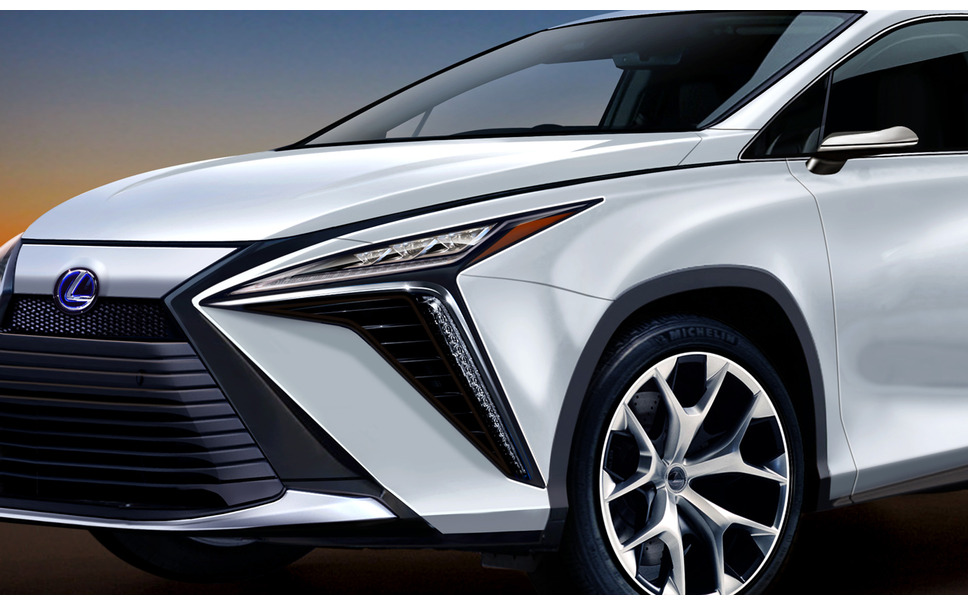This is veering a bit off topic, but I actually think it's very relevant to the RX because it's such a key Lexus product and the segment is increasingly competitive.
Toyota's 4x4 technology in the GX and LX is the best there is for tough terrain, simply put. So this discussion is about AWD systems for unibody vehicles, not truck-based SUVs with true 4x4 systems.
Right now, the RX and NX use Dynamic Torque Control AWD which does not offer true torque vectoring, but rather it will apply a brake to one side of the rear axle to force power to the other. It is more sophisticated than a "simple AWD" system, but it is not as good as true torque vectoring systems that can
actively send power to either side, front to rear, like Acura's SH-AWD, Subaru's Symmetrical AWD, or Audi's Quattro. It's also worth noting that all of those systems now have multiple iterations and versions, so the comparisons become hairy.
The other key differentiator between something like SH-AWD, Quattro and Symmetrical AWD vs. Lexus' Dynamic Torque Control AWD is that the Toyota system must lose traction before AWD is engaged, often called a "Slip then grip" approach... this does, however, positively impact MPG. SH-AWD is always in AWD, even if 90% front:10% rear, Quattro Ultra reads road surfaces, driver inputs and the wheel rotation to engage or disengage AWD automatically, and Symmetrical AWD is always on for all four wheels.
Lexus' AWD systems on the IS, GS and LS are permanent AWD systems that almost mimic the full time 4x4 systems in the GX and LX, but are adapted for sedans.. I think the default power delivery is 70% rear:30% front, with the max of 50%:50% front/rear. The system drives all four wheels at all times, and as a result, sucks quite a bit of gas. The upside is that these sedans do not use a "slip then grip" approach like the NX and RX - they have AWD traction at all times. This setup uses a planetary-gear center differential, plus a wet-type multi-disc clutch control to act as slip control that can fully engage the front wheels if the rear wheels lose traction, or fully engage the rear wheels if the front wheels lose traction. The downfall of this system is that it locks torque front to rear and not side to side, so it is not torque vectoring which does have real world benefits in bad weather, let alone sporty driving.
You could make the case that for an AWD sedan, this setup is overkill, and an active, on-demand system that engages when traction is lost or only 10% of power is sent to the front wheels would make more sense.
In my opinion, Acura's SH-AWD system is the best of the bunch because it is active torque delivery front:rear and side:side, provides great traction and grip, and also now in the TLX, can be programmed with a RWD bias. That is as much as you can ask for in a vehicle that is FWD-biased - the electronics help compensate for the platform and can make the car behave more like a RWD one. SH-AWD also sends 90% of power to the front wheels when driving in a straight line in an effort to save gas.
- The system continuously determines the optimal level of power distribution between the front and rear wheels—and between the rear wheels individually – based on a continuous analysis of wheel speed, steering angle, lateral G-force and yaw rate.
- To greatly improve fuel efficiency, up to 90% of the power is sent to the front wheels when cruising in a straight line.
- As weight shifts to the rear during hard acceleration, the SH-AWD® system transfers up to 45% of engine power to the rear wheels and takes full advantage of additional, available traction.
- On a curve under hard acceleration, the TLX feels firmly planted, because 70% of effective torque can be directed to the rear wheels. And all of that torque can be applied exclusively to the outside wheel, which improves cornering ability by allocating power where the weight has shifted.
- SH-AWD® on the TLX even further reduces understeer and increases stability by revolving the outside rear wheel up to 2.7% faster than the other wheels, helping rotate the vehicle through the turn.
Source.
Quattro Ultra, Audi's latest AWD system for non-performance S/RS cars, has been somewhat "detuned" for fuel economy where it operates primarily in FWD until a slip or need for additional traction is detected, and then the rear axle is engaged for maximum traction. This is similar to Toyota's Dynamic Torque Control AWD and Dynamic Torque Vectoring AWD that default to FWD to save fuel in day-to-day driving. If I'm not mistaken, I believe the newer versions of Quattro can be locked in AWD via sport mode, but I could be wrong about that. Essentially, even the A8 is "FWD" day to day unless locked into AWD or the system detects a slip and engages.
The [Quattro Ultra]all-wheel drive system’s intelligent control works predictively, always looking ahead by means of a comprehensive array of sensors and the continuous analysis of the driving dynamics, road condition and driver behavior data collected. Consequently, the quattro all-wheel drive system is always ready when needed. During standard operation at low loads without the risk of wheel slip, the new quattro taps into all the advantages of front-wheel drive.
All-wheel drive is always deactivated when it is not needed, but remains permanently available, significantly reducing the potential fuel consumption difference between front-wheel drive and permanent all-wheel drive.
Source.
Subaru's symmetrical AWD system is somewhat similar to Toyota's Dynamic Torque Control AWD in that it can lock the rear clutch pack which then forces power to the side of the axle that needs it, but where it goes a step further is how the sensors behave in actively doing so front to rear and side to side, and the fact that Symmetrical AWD is always engaged and does not require a slip before engaging.
Many of us have probably seen this video, but here is a good example of Lexus DTC AWD vs. an older version of quattro vs. an older version of SH-AWD. Unfortunately for Lexus, the Audi and Acura systems are now at least one generation newer and DTC AWD is still the same.
I am not well versed on the latest 4MATIC or xDrive systems, although the new M5's ability to engage AWD or pure RWD is truly amazing.
So... most premium vehicles these days offer an on-demand "slip then grip" or efficiency-minded AWD system (Like SH-AWD's 90% front:10% rear default power delivery) that saves fuel during day-to-day driving when (full) AWD isn't needed, but they also offer torque vectoring when the system is engaged. Lexus offers neither: DTC AWD is a "slip then grip" system that does not offer torque vectoring, and Lexus AWD for sedans is a permanently on system that eats a noticeable amount of gas and also does not offer torque vectoring.
As you can see, Lexus needs at least two new AWD systems to catch up to the competition with regard to AWD technology: one for FWD biased platforms and one for RWD platforms, but both should probably have a similar functionality where fuel is conserved in day-to-day driving via disengagement or a less aggressive torque split, and torque vectoring is available when needed and the system is fully engaged. Dynamic Torque Vectoring AWD, as seen on the RAV4 Limited/Adventure/TRD Off Road and Highlander Limited/Platinum, is a "slip then grip" system that offers torque vectoring, so for most pedestrian applications, it is a perfectly fine system, but still not as good as SH-AWD or Symmetrical AWD.
Everything I wrote above would be for gas-powered applications. E-Axle could definitely change things for Lexus by offering on-demand torque vectoring with an increased power delivery, potentially like SH-AWD combined with an electric motor. It's a very promising option. In E-Four AWD, the hybrid system delivers power to the front wheels only and the rear wheels have their own battery, PCU and differential... the logical progression here is E-Four with E-Axle or "posture control" where the front wheels get power via the hybrid system and the rear wheels have a large(r) rear battery and an axle that can actively send (more) power between the wheels, a la torque vectoring.
The LS 500h uses Lexus' sedan AWD system with Torsen LSD, and being a hybrid, you pay less of a penalty for the "always on" approach because of the batteries. Hybrids and electronics have the ability to be the great equalizer for Lexus FWD platforms with AWD, and I am hoping this 5th gen RX becomes a showcase in that regard.
This next part may seem a bit far-fetched, but I think it is actually the most likely solution for the RX/TX 500h: The next gen "500h" combines 2.4L turbo 4 with hybrid motors and E-axle for something like 350-360hp
with torque vectoring. Whether it is a 350hp turbo 4 cylinder hybrid or a V6 hybrid (much less likely) either generating ~350hp, will not change the fact that Lexus will be venturing into higher HP applications for FWD biased platforms and need a more sophisticated AWD system.
8GR-FXS (LS 500h) uses the GR V6 and is likely engineered for longitudinal applications, not transverse ones, so I do not expect that 354hp hybrid system to be a direct translation for RX 500h or TX 500h, despite the similarity in trademarks. I think it is far more likely that the 500h for transverse mounted applications is 2.4L turbo 4cyl detuned for efficiency, so probably ~270hp, + hybrid system batteries (+~50hp) + E-axle (+~30hp) for a maximum output of something like 350-360hp..... with torque vectoring. Those numbers are very realistic and match the output of the other 500h, 8GR-FXS. In a technological sense, this would eclipse the current 500h system in the LS 500h and LC 500h, but we know that a "600h" for flagship vehicles is just around the corner, so the current 500h (really just an upgrade over the GS 450h's 3.5L hybrid system) was just a stopgap powertrain until the full TNGA hybrids were available for larger, more powerful applications.
So in summary, I expect for USA RX/TX:
350: 2.4L turbo 4cyl, 10AT, ~300hp, FWD with optional Dynamic Torque Vectoring AWD
350h: 2.5L NA hybrid 4cyl system from the Highlander Hybrid, 245hp, E-Four AWD
450h+: 2.5L NA hybrid 4cyl plugin system from RAV4 Prime, 302hp, E-Four AWD
500h: 2.4L turbo + hybrid + e-axle ~350hp, E-Four AWD with Posture Control (torque vectoring)
Now envision: Next gen ES 500h with 350-400hp due to larger E-axle battery, and torque vectoring AWD. It is very realistic - and nobody will shed a tear over the GS.
Is this my longest post on LXE? Maybe. Hope you enjoyed my Ted Talk!


